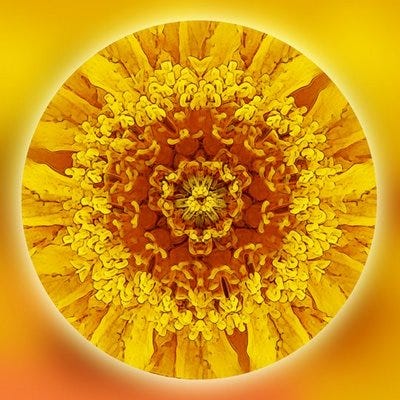Happy Summer Solstice!
There’s a welcome breeze tickling the lavender in my window boxes, this sultry midsummer day in London. It feels like a global seasonal birthday party, as I tune into a sense of connection with gazillions of people, past and present, aligning with the solstice. As the Earth orbits the sun, its tilted axis scatters light across the Northern and Southern hemispheres for half of each year. At solstice, from the Latin - sol- sun, sistere - to stand still, the Earth reaches maximum or minimum tilt towards the sun, creating the longest and shortest days.
Image: Nabta Playa
Since antiquity, humans have been celebrating this peak moment of the planetary dance in style. As knowledge of the seasons was essential for crop growing, ancient monuments served both mystical and practical purposes, tracking vital rays through giant gateways and standing stones. Radiating out from a burial mound, the world’s earliest known stone circle, Nabta Playa, erected in the Nubian Desert in South Egypt around 4500 BC, operates as a stone calendar aligned to the summer solstice sunrise. Two centuries later, hundreds of people transported a circle of massive stones from the Preseli Hills in Wales and Marlborough Downs to form Stonehenge. This year 25,000 people followed in their footsteps to catch the first sight of the light gliding over the Heel Stone into the heart of the monument, their voices resonant with ancestral echoes. Many thousands more will gather by the Sphinx to see the sun rise between the Pyramids of Giza or beam through the gateway of the Mnajdra Temple, Malta. Others will immerse themselves in the Pacific Ocean as part of a Misogi purification Ritual, as the sun rises between the Wedded Rocks at Futami Okitama Shrine, Japan.
The flame of Solstice fires is passed around the world in festivals of fertility, feasting, creativity and communion. Areas of Norway, Sweden, Finland, Iceland, and Canada above the Arctic and Antarctic circles are bathed in the Midnight Sun as the sun hovers above the horizon. In European countries, Pagan and Christian practices merge, as Litha (Old English for Midsummer) is celebrated alongside St John’s Day. In Austria, Herz Jesu fires are lit along the Alps, celebrating the Tyrol’s victory against Napoleon in 1796. Entrusting their fate to the ‘Sacred Heart of Jesus,’ huge numbers of volunteers joined the Tyrolean Landsturm, communicating through mountain fire signals in a fiery defeat of the French army. Some centuries earlier, in another act of resistance, the poet Qu Yuan stepped into the Miluo River carrying a large stone, protesting the fall of the corrupt Chu regime to the Qin in 278 BC. His poem, written in one of his exiles from the Chu court as a result of slander by courtiers, prefigures the immortalising of his protest suicide in the summer solstice Dragon Boat races.
Then give me green-horned serpents for my steed,
Or dragons white to ride,
In paradise with ancient kings I'd roam,
Or the world's roof bestride.
My life should thus outlast the universe,
With sun and moon supreme.
By southern savages misunderstood,
At dawn I ford the stream.- She Jiang (涉江 - Crossing the River - Qu Yuan
Image: Kukulcán Pyramid in the Mayan complex of Chichén Itzá, Mexico Pixabay
Solstice celebrations acknowledge that the celebration of light is only made possible by the beauty of darkness. The Kukulcán Pyramid in the Mayan complex of Chichén Itzá, Mexico, is split into light and shadow by the summer solstice sunset. For Pagans, the summer solstice marks the superseding of the Oak King by the Holly King, whose prickly accession begins the ebbing of the light towards the darkest day of winter solstice. In a 1923 letter to the Countess Margot Sizzo-Noris-Crouy, Austrian poet Rainer Maria Rilke writes that “Just like the moon, life surely has a side that is perpetually turned away from us and which is not its opposite but adds to its perfection and completeness, to the truly intact and full sphere of being.” Like our ancient ancestors, who built temples to honour the light and shadow, he urges us to love life ‘unreservedly’ so that death is “is at all times unwittingly included in and loved along with life – which is precisely what happens each time in love’s vast, unstoppable, and boundless movements.” So the songs of solstice contain the silence between the sound, inviting moments of standstill beauty amidst the frenetic activity of life.
I am the rest between two notes
That harmonize only reluctantly:
For death wants to become the loudest tone–But in the dark interval they reconcile
Tremblingly, and get along.
And the beauty of the song goes on.~ Rainer Maria Rilke, The Book of Hours (1905)










thank you, there was so much here I hadn't heard - I love hearing about new places and traditions.